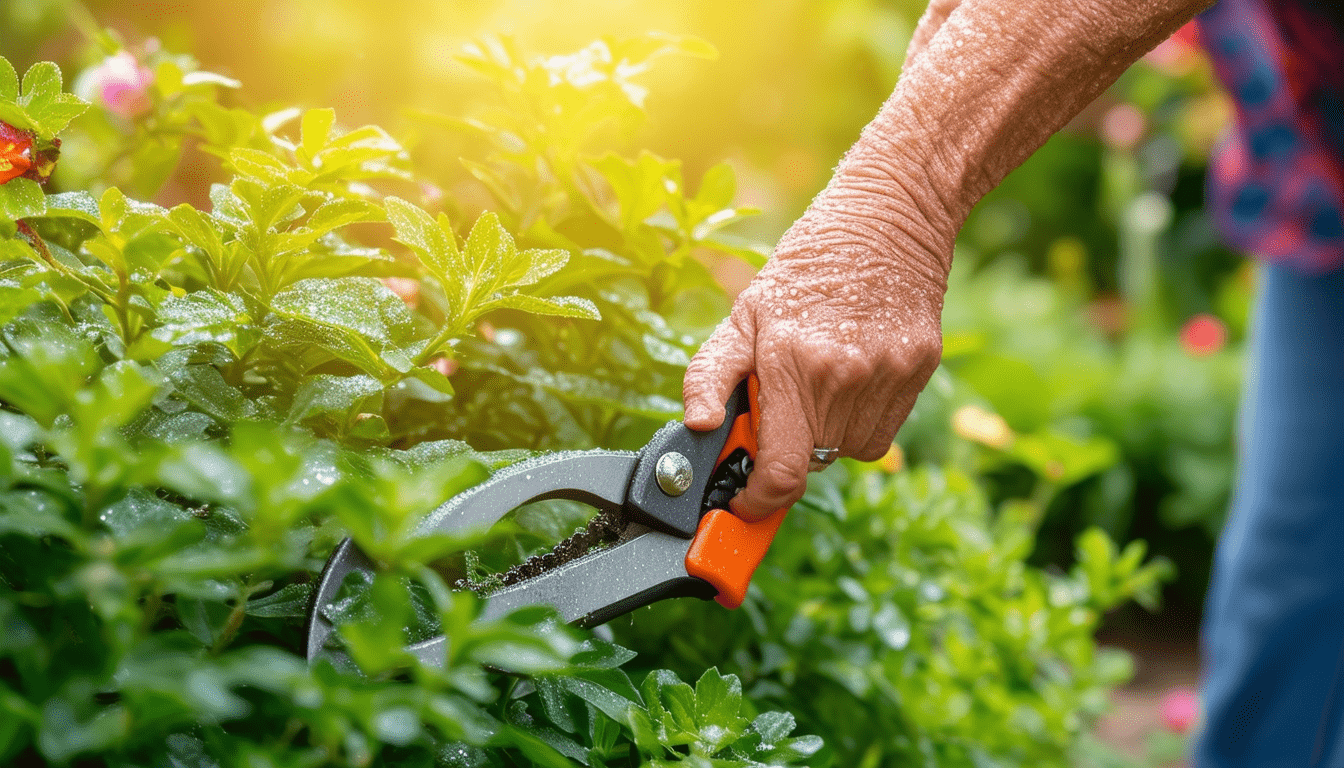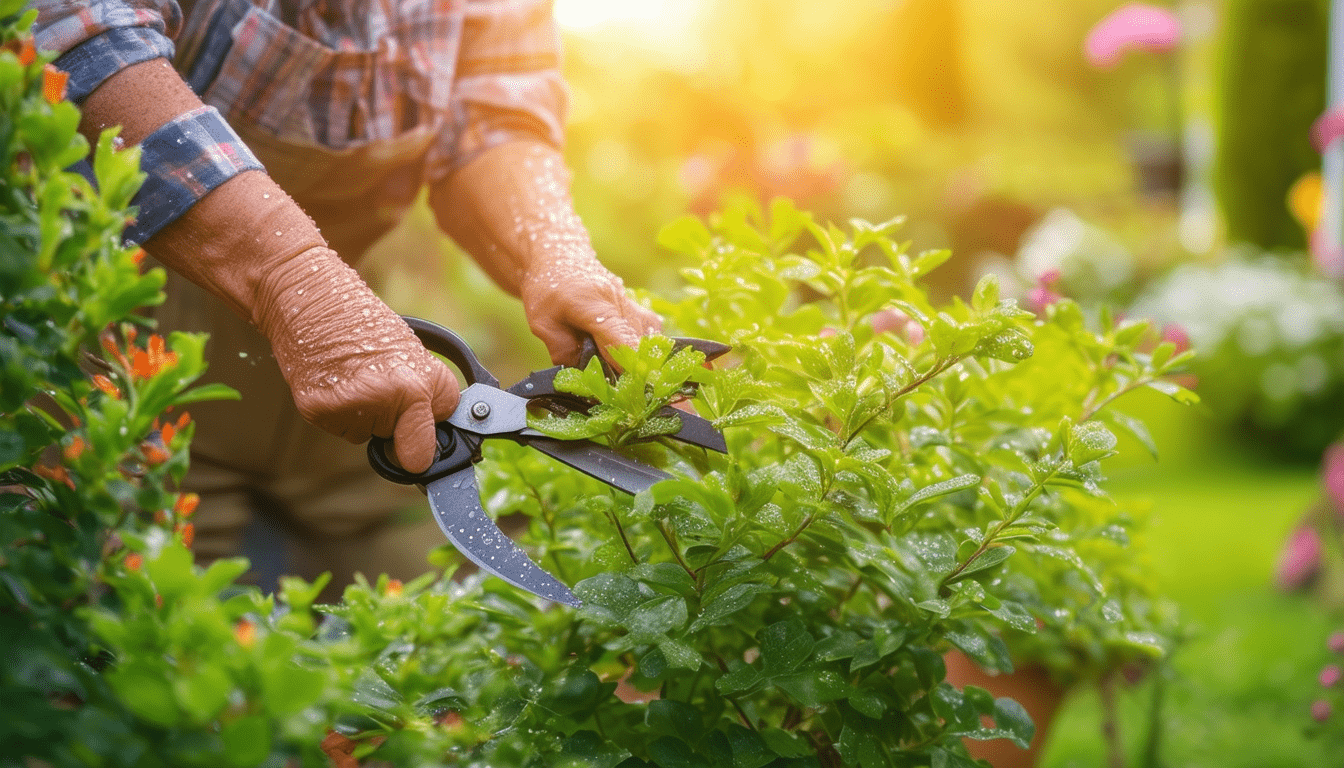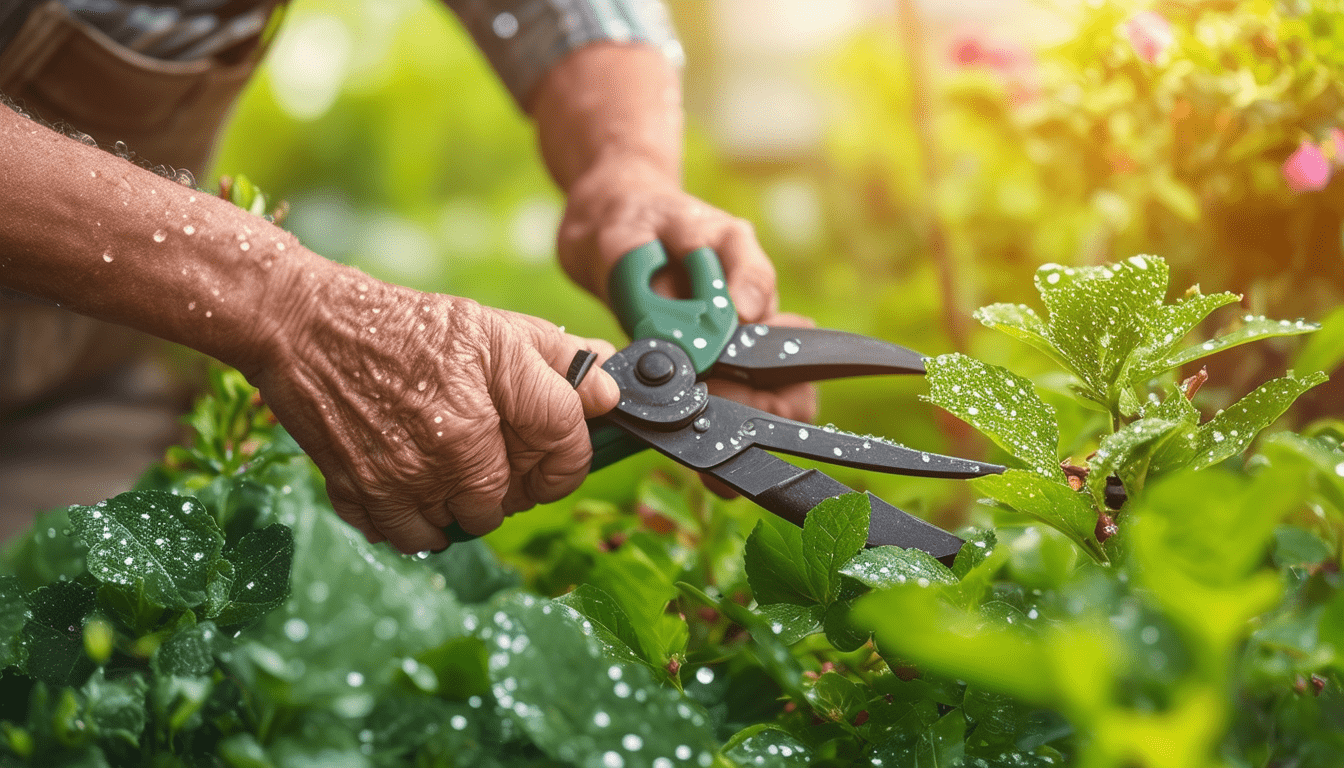Pruning techniques: essential tips for healthy plants
|
IN BRIEF
|
Maintaining healthy plants is a fundamental aspect of successful gardening, and pruning stands at the forefront of this with its significant benefits. By employing proper pruning techniques, gardeners can not only encourage new growth but also enhance the overall vitality of their plants. This involves understanding when and how to trim branches effectively to trigger chemical responses that lead to increased foliage and enhanced air circulation. Therefore, mastering essential pruning tips is vital for anyone seeking to cultivate robust and flourishing greenery in their gardens.

Pruning is an essential practice for any gardener looking to maintain healthy and vibrant plants. Understanding the right pruning techniques can significantly impact plant growth, improve air circulation, and prevent diseases. In this article, we will explore various methods, tips, and the science behind pruning, as well as the best practices that can help elevate your gardening skills.
The Importance of Pruning
Regular pruning is not just about keeping your garden looking tidy; it plays a crucial role in the overall health of your plants. When branches are cut, plants initiate a chemical response that encourages new growth, ultimately leading to a stronger and bushier plant. This process can help remove dead, diseased, or damaged growth that could hinder vitality. Successfully managing this activity can ensure your plants thrive and remain aesthetically pleasing.
Understanding Pruning Techniques
There are several fundamental pruning techniques to be aware of, each serving a different purpose. Below are some vital methods that every gardener should consider:
Thinning
Thinning involves removing entire branches or stems to reduce plant density. This technique enhances air circulation and allows more light to reach the inner parts of the plant, which benefits overall health and growth. It is particularly useful for congested or overgrown plants.
Pinching
Pinching is a technique where the growing tips of plants are removed with the fingers. This method encourages branching and bushier growth, making it especially effective for herbaceous plants and annual flowers.
Heading Back
Heading back involves cutting back a portion of the plant’s stem or branch to encourage fuller growth. This technique is suitable for shrubs and trees, helping reshape plants and eliminate leggy or spindly growth.
Mastering the Basics
For effective pruning, there are essential guidelines to follow regarding cutting angles and timing. Always aim for a 45-degree cutting angle just above a leaf axle. This angle helps prevent moisture retention in the cut area, which can lead to rot. Additionally, prune during the appropriate season to avoid stress on the plant. Early spring is generally a favorable time to begin pruning, before new growth starts.
Follow the One-Third Rule
The one-third rule is a common guideline that suggests not removing more than one-third of a plant’s crown in one pruning session. This practice prevents undue stress and allows the plant to recover and thrive.
Essential Tips for Successful Pruning
To achieve the best results when pruning, consider the following expert tips:
- Always use sharp, clean tools to make clean cuts and reduce the risk of infections.
- Remove any dead or diseased branches first, as this facilitates healthy growth for the remainder of the plant.
- Assess the plant’s structure and form before starting to prune, ensuring each cut supports a balanced shape.
Specific Plants and Their Pruning Needs
Different plants have unique pruning needs. For instance, roses require regular deadheading to encourage blooming, while fruit trees need to be pruned to enhance fruit production. Understanding these unique requirements is vital for all gardeners.
For further insights into effective pruning practices, you might explore resources such as Fine Gardening and essential tips for thriving plants on Eplanters.
Pruning Workshops and Additional Resources
Participating in practical workshops can enhance your pruning skills. Consider attending specialized training sessions, such as those offered by local gardening centers or through organizations like Bullington Gardens. Additionally, comprehensive online guides can provide valuable and detailed information about various pruning techniques.
The Future of Your Garden
Implementing these pruning techniques can dramatically transform your gardening experience, leading to healthier plants and a flourishing garden. This practice is not merely about maintaining appearance but enhances the overall ecosystem of your gardening space. For an informative dive into horticulture techniques, check out resources like Cannabis Daily News and N.C. State Extension.
By understanding the intricacies of pruning, your plants can achieve their fullest potential, turning your garden into a thriving landscape.
Pruning Techniques Comparison
| Pruning Technique | Benefits |
| Thinning | Enhances air circulation and light penetration within dense plants. |
| Heading Back | Promotes bushy growth by cutting back stems, encouraging new branching. |
| Deadheading | Removes spent blooms to enhance flower production and extend the blooming period. |
| Reduction Pruning | Reduces overall size while maintaining natural shape and structure. |
| Cleaning | Eliminates dead, diseased, or damaged growth, improving plant health. |
| Pinching | Encourages compact growth and fuller plants by removing terminal buds. |
| Pruning at a 45-Degree Angle | Promotes faster healing and reduces the chance of disease entry. |

Pruning is a fundamental practice for anyone looking to maintain vibrant and healthy plants. By utilizing effective cutting techniques, growers can encourage new growth, improve air circulation, and prevent disease. This article will cover essential pruning tips and various techniques that every gardener should master for optimal plant health.
Understanding Pruning
Pruning is not merely about cutting back plants; it is a systematic approach that stimulates growth and enhances plant productivity. When a branch is pruned, the plant responds with a chemical reaction that directs energy toward new foliage and branching. This process can be vital in shaping your plants and keeping them vigorous.
Why Prune?
Regular pruning helps in removing unnecessary limbs, dead or diseased sections, thus maintaining the overall health of your plants. Not only does this practice boost aesthetics by enhancing shape, but it also increases light penetration and improves air circulation, which are critical factors for *plant health*. In fact, allowing sunlight to reach more leaves can significantly impact the plant’s photosynthesis process.
Essential Pruning Techniques
There are various techniques to utilize when pruning plants, and mastering these can lead to greater success in your gardening efforts. One popular method is the thinning technique. This involves removing entire branches to reduce density, which ultimately contributes to the health of the plant.
Mastering the Cutting Angle
The angle at which you cut can profoundly influence the health of your plants. Aim to cut at a 45-degree angle just above a leaf axle. This not only helps in water runoff but also encourages the plant to develop new growth from the cut area.
The One-Third Rule
One common guideline is the one-third rule, which suggests that you should never remove more than one-third of a plant’s total crown in a single year. This rule helps prevent shock to the plant, allowing it to recover and thrive.
Timing Your Pruning
Timing is another critical factor in the pruning process. It is advisable to prune only after the danger of frost has passed to prevent damage to new growth. Consider the specific needs of each type of plant to determine the best time for pruning.
Adhering to proper pruning techniques not only improves the aesthetics of your garden but also ensures that your plants remain healthy and vigorous. To explore detailed methodologies for different plants, check out comprehensive guides like those available at Cannabis Daily News, and Clemson’s HGIC. For more expert tips, visit Gardeners’ World.
- Thinning: Remove entire branches to enhance air circulation.
- Cutting Angle: Aim for a 45-degree angle above a leaf axle.
- One-Third Rule: Do not remove more than one-third of the plant crown.
- Deadheading: Prune spent flowers to encourage blooms.
- Timing: Prune at the right season for optimal growth.
- Tool Maintenance: Keep pruning tools sharp for clean cuts.
- Observe Growth: Assess plant before deciding on cuts.
- Diseased Growth: Remove affected parts immediately to prevent spread.
- Shaping: Trim for desired shape while promoting healthy growth.
- Research Plants: Understand specific needs for each species.

Introduction to Pruning Techniques
Proper pruning techniques are essential for maintaining healthy and thriving plants. Understanding the fundamentals of pruning not only encourages new growth but also enhances plant vigor and overall health. This guide will explore effective pruning techniques, tips for beginners, and essential practices that promote robust plant development.
Importance of Pruning
Pruning serves multiple purposes in the garden. Primarily, it helps facilitate growth by stimulating chemical responses within the plant when branches are cut. This results in the development of new foliage and branching that can contribute to the plant’s health. Removing dead, diseased, or damaged growth ensures that the plant can focus its energy on producing healthy new growth.
Improving Air Circulation
One often overlooked benefit of pruning is the enhancement of air circulation within the plant’s canopy. Thinning techniques, where entire branches are removed, can significantly improve air flow and light penetration. These improvements are crucial, especially in densely foliaged plants, as they can help reduce the incidence of pests and diseases.
Maintaining Aesthetic Appeal
Beyond health benefits, proper pruning also helps maintain the aesthetic appeal of your landscape. Regularly shaping your plants through pruning can result in a more pleasing overall appearance. This practice is particularly important for ornamental plants and flowering shrubs, where the goal is to enhance their natural beauty while promoting healthy growth.
Basic Pruning Techniques
Understanding a few basic pruning techniques can make all the difference in how your plants respond. Establish a cutting angle of 45 degrees just above a leaf axle; this technique allows for proper healing and minimizes the risk of disease entering the plant. This method is essential for various plants, including roses, bushes, and fruit trees.
The One-Third Rule
Another crucial principle to remember is the one-third rule. This guideline suggests that no more than one-third of the total crown of a plant should be removed in a single year. Adhering to this rule helps prevent undue stress on the plant, allowing it to recover and thrive following pruning.
Types of Pruning
Various pruning techniques exist, each with distinct purposes. Thinning, for instance, reduces the density of a plant while enhancing light penetration. On the other hand, heading back involves cutting the main stem to encourage branching, effectively shaping the plant. Familiarizing yourself with these techniques allows for more tailored care for your garden.
Essential Pruning Tips for Beginners
For those new to pruning, there are several tips that can improve your technique. Always use sharp, clean tools to ensure a clean cut that promotes healing. Consider the time of year, as some plants have specific pruning seasons—typically late winter or early spring before new growth starts. Familiarize yourself with the specific needs of each plant species in your garden for optimal pruning results.
Observe Your Plants
Paying attention to the growth patterns and health of your plants is vital. Observing how your plants respond to previous pruning efforts can provide insights that inform future practices. Regular pruning leads to a more vigorous, healthy landscape and is a key component of effective garden management.


Post Comment